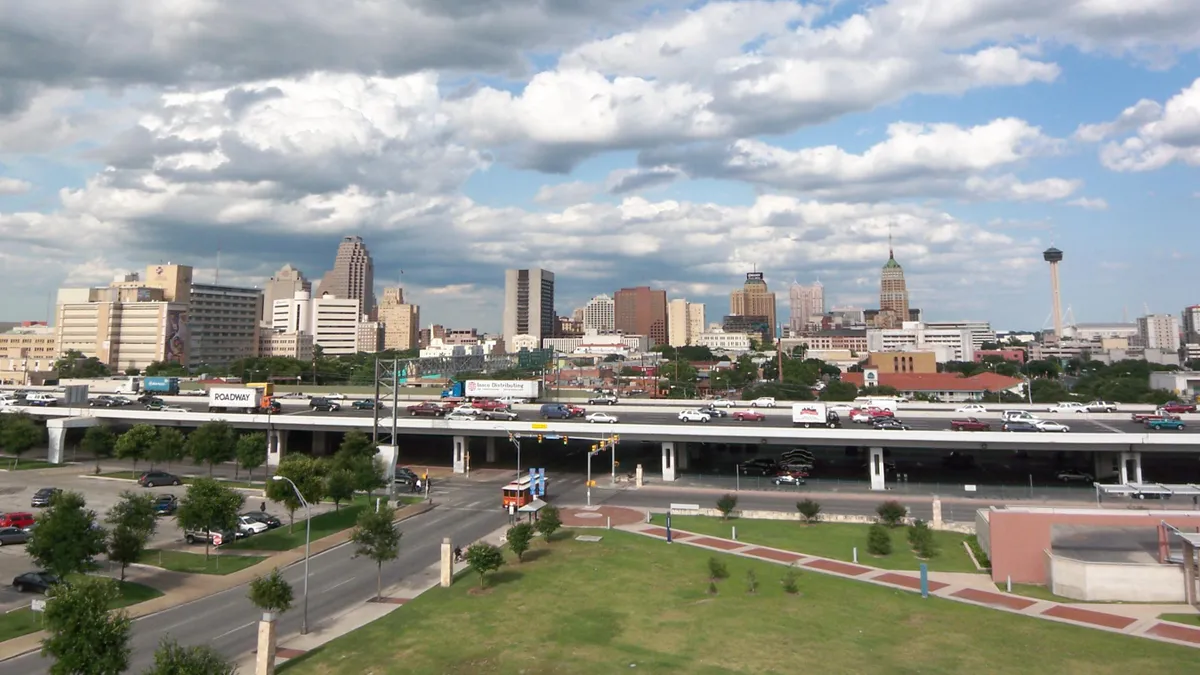Dive Brief:
- San Antonio created a new research and development program, the R&D League, to advise the city on new ideas and provide tools for making data-driven, equitable decisions that benefit all residents.
- The group chose six initial projects to focus on, including an interactive mapping tool to track affordable housing intervention; data collection from sensors on city vehicles; and artificial intelligence applied to the city's existing traffic camera feeds.
- The group is a partnership with Southwest Research Institute (SwRI), the United Services Automobile Association (USAA) and the University of Texas at San Antonio (UTSA).
Dive Insight:
R&D is a term commonly used in the private sector that refers to product development innovation. The term is used less frequently in the public sector, but when it is applied, it often refers to service delivery. Upgrades tend to happen incrementally instead of launching all at once.
The chosen R&D League projects were whittled down from a pool of more than 30. The city developed the concepts by establishing its own objectives, pulling information from survey data and engaging with the community and partners, Kate Kinnison, San Antonio's R&D administrator, told Smart Cities Dive.
After about three months, the group plans to present its first three project results to the city council to show "in a much more tangible sense what we're learning and the value that this program will bring to the community," Kinnison said. Once the initial results are presented, additional funding opportunities could become available for advancing the remaining projects.
Some details about how the program will operate and be evaluated are fluid. But the program also intends to determine long-term processes and evaluation measures for the R&D League based on successes from the initial phase, with room for tweaking and adjustments along the way.
"We may learn after three months that one or two of the projects [are] just not working. Then we'll want to fail fast and move on and work on something that will bring value to our community," Kinnison said. "We're trying to adopt that philosophy for the public sector in a way that makes sense for us and in a way that's responsible and shows respect for the taxpayer dollar."
San Antonio developed the idea after observing what many other cities were doing in the innovation space, and then catered the program to local needs. "We learn from them but try not to assume what works for them, works for us," Kinnison said.
Being open to failure and program changes is not the typical go-to process for public sector projects because it's often considered a risky way to use taxpayer resources. The city wants to re-frame risk in a positive way with R&D.
"Sticking to the status quo doesn't work anymore. Everything is moving forward, whether it's the digital realm or just the way we do business overall," Brian Dillard, San Antonio chief innovation officer, told Smart Cities Dive. "City government shouldn't be the ones left behind because we're stuck in our ways. We may take risks and we'll probably fail a couple times, but out of that we'll have some major wins."
By taking a public-private partnership approach, the city recognizes that it can learn and improve by bringing in outside expertise. Additional partners could be added to the R&D League as the program advances.












